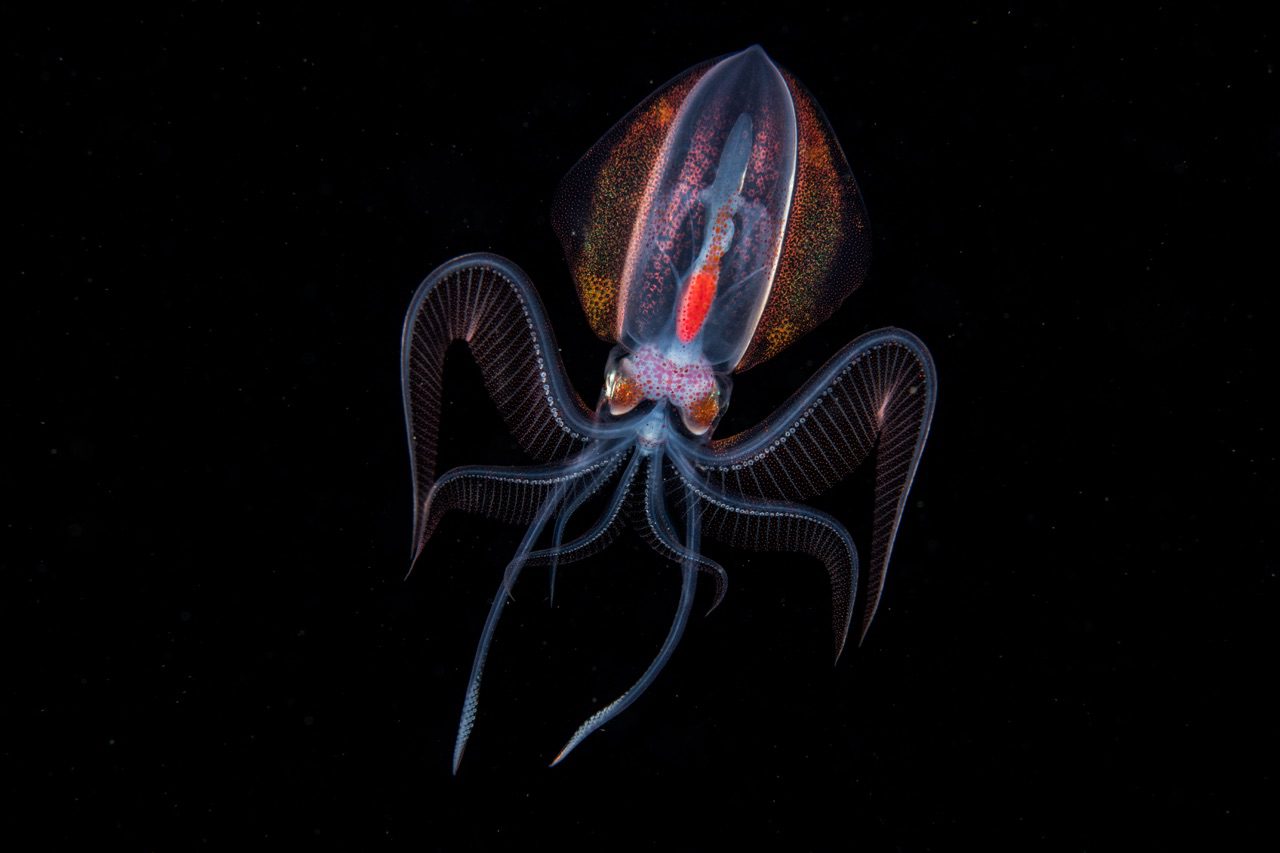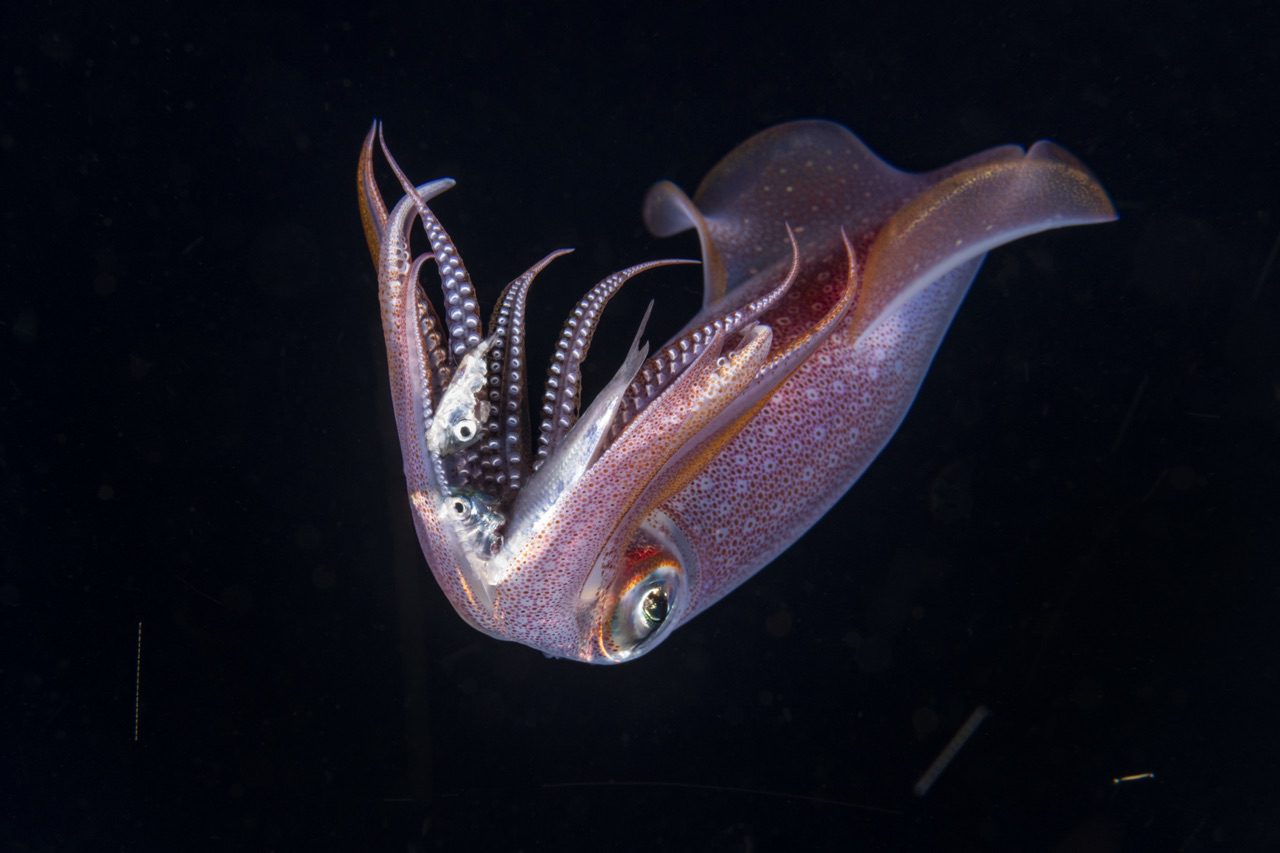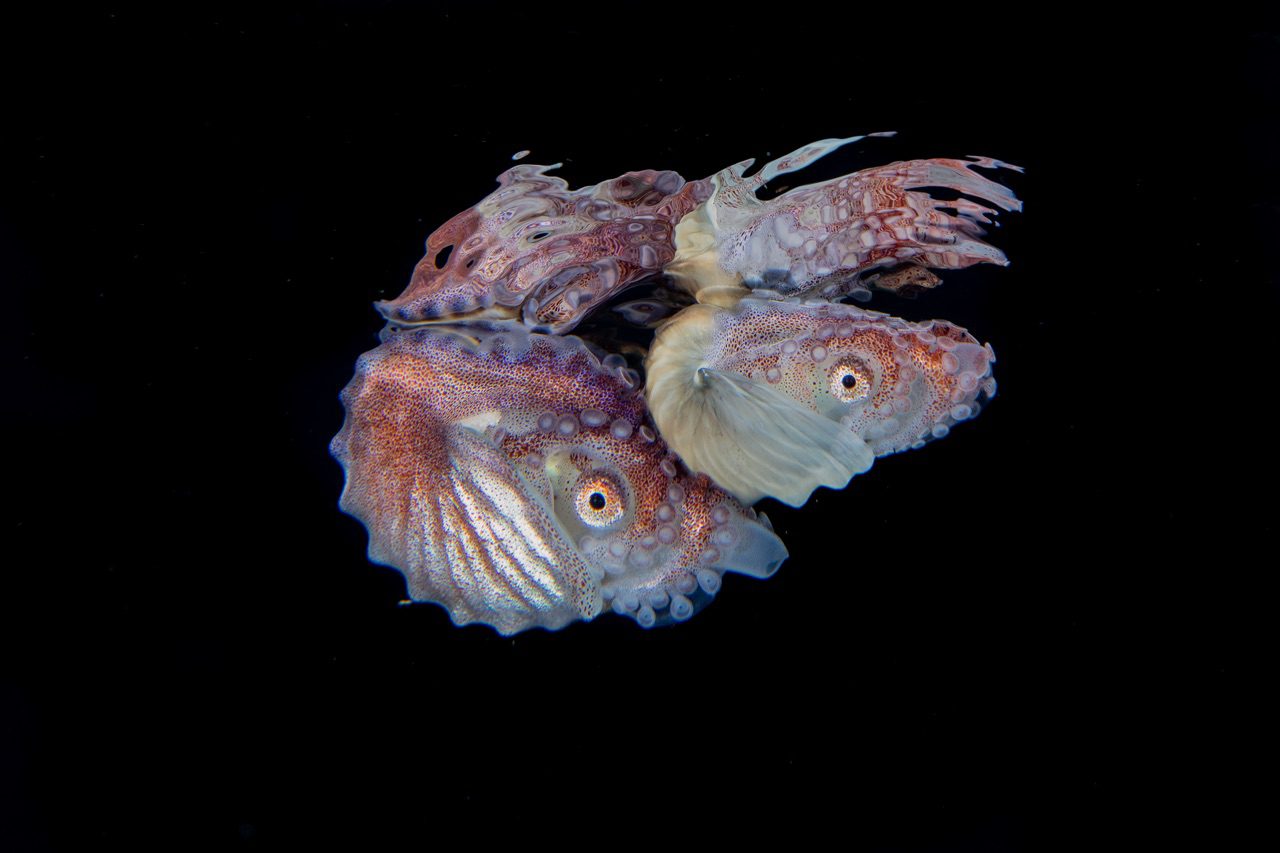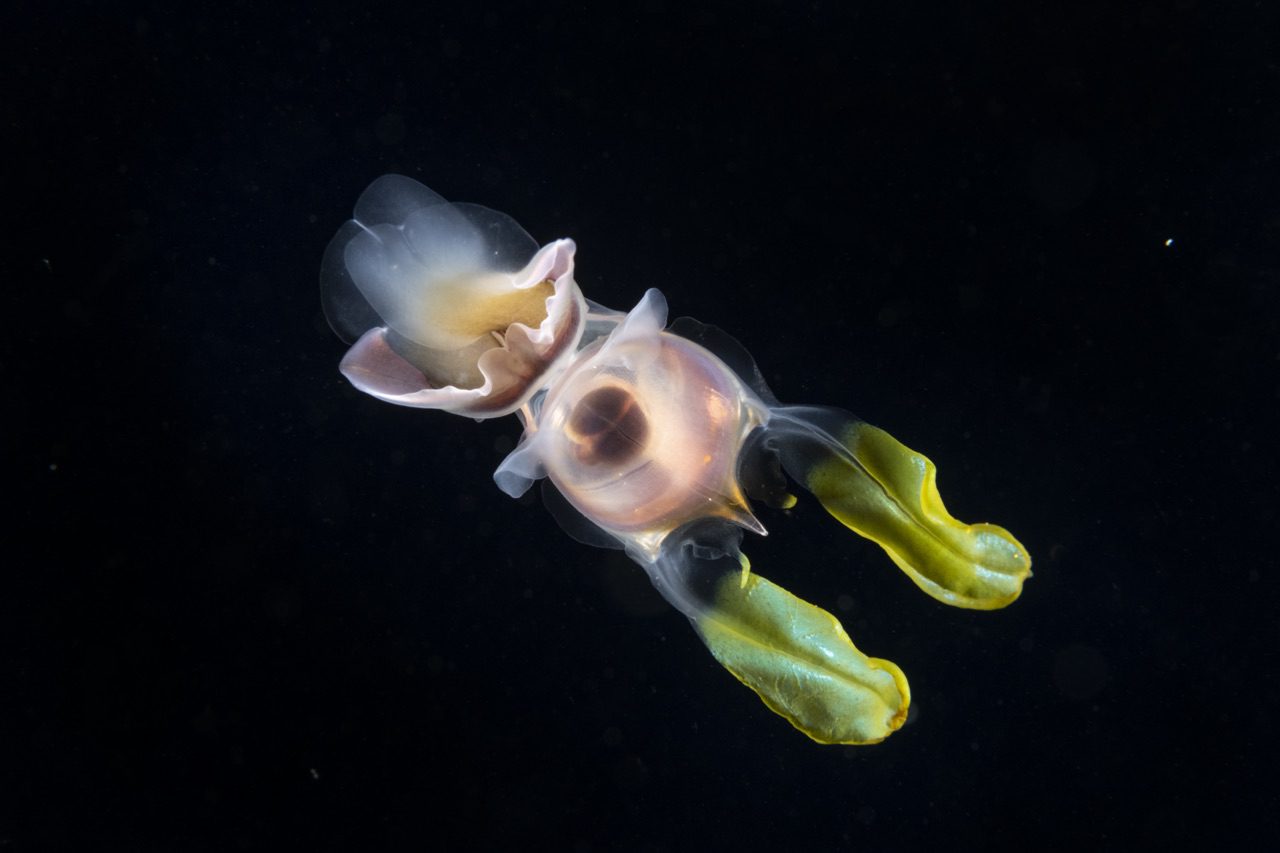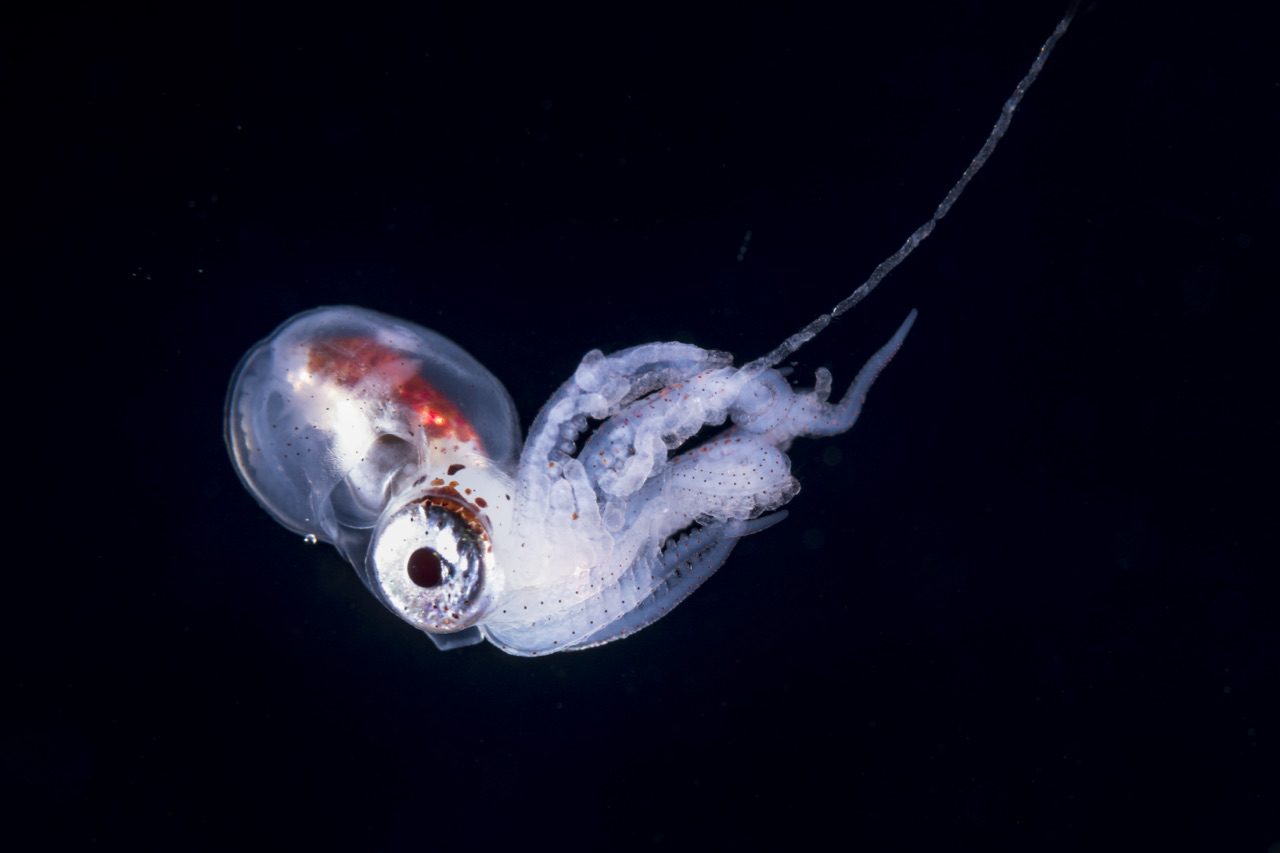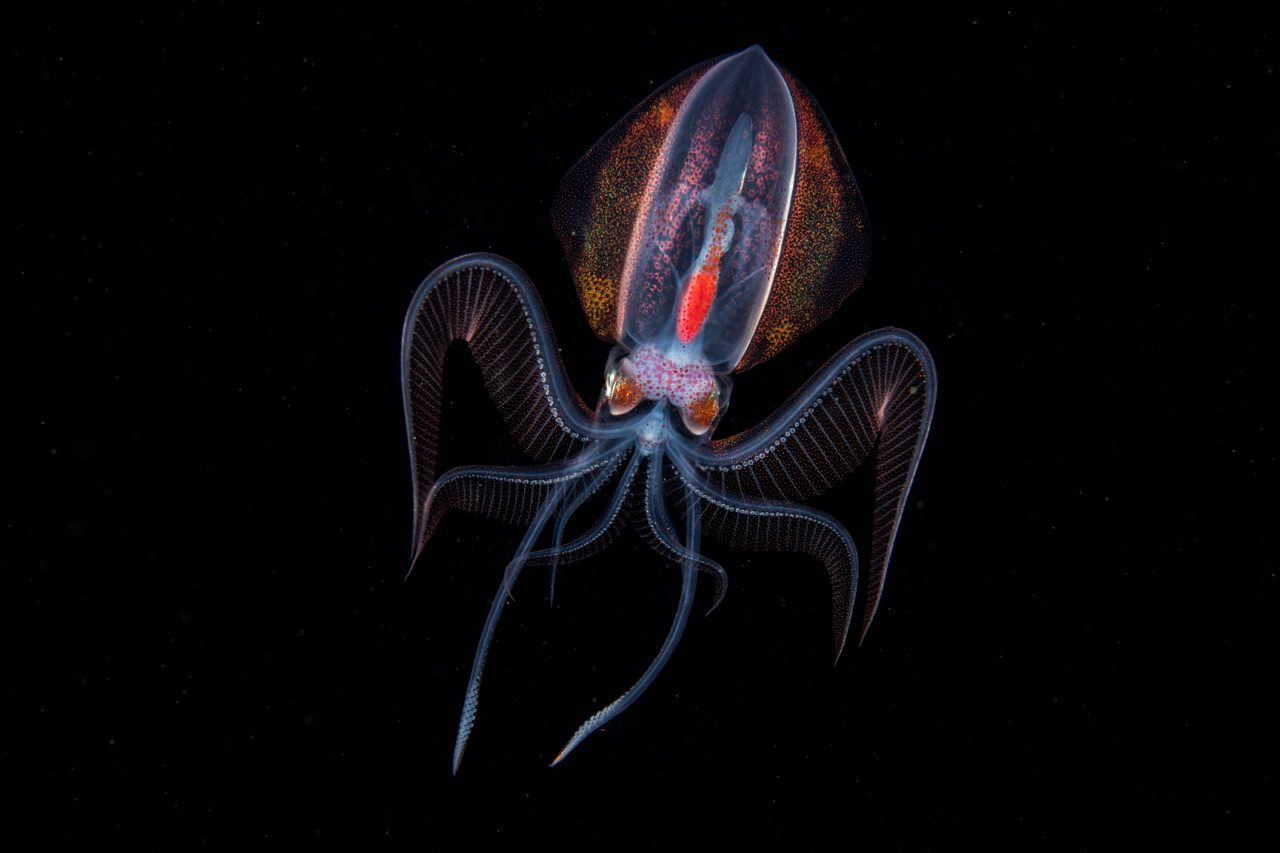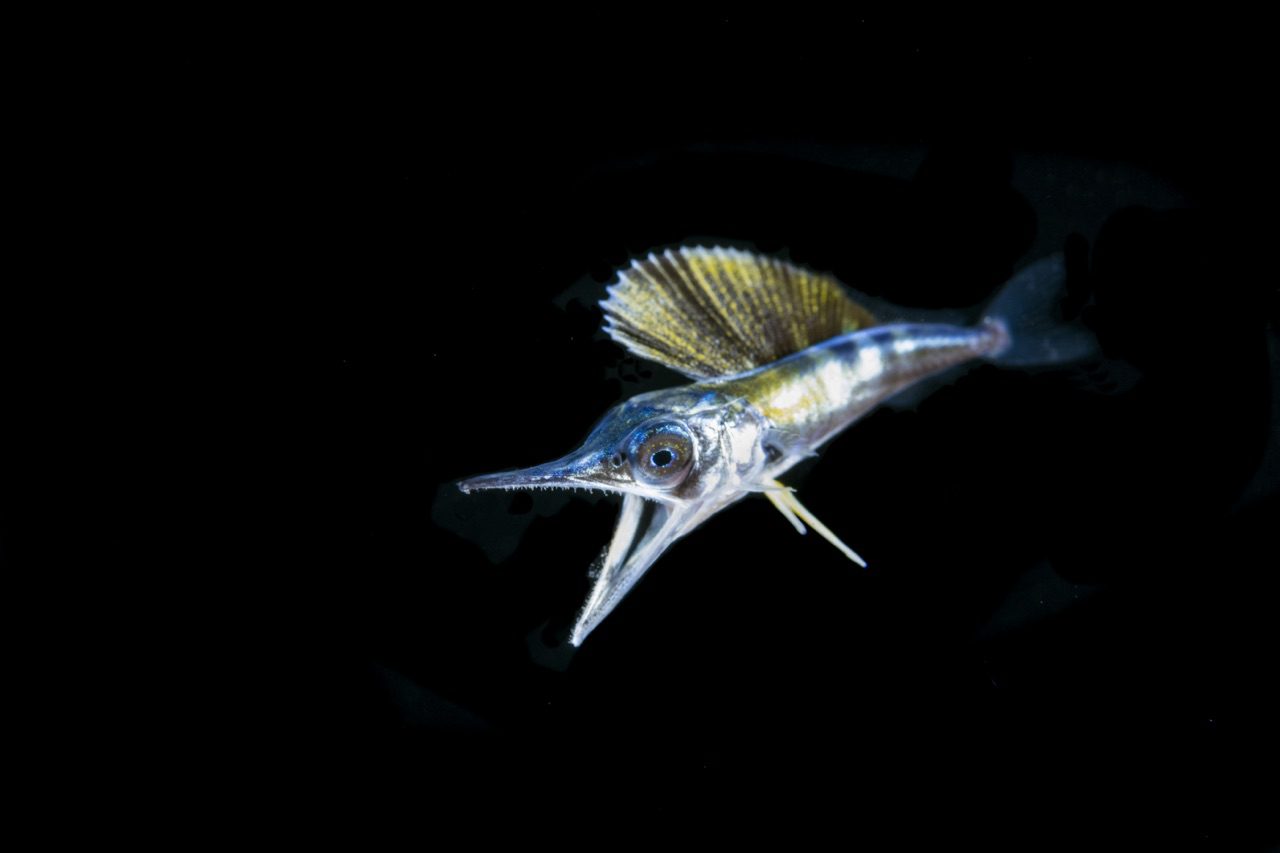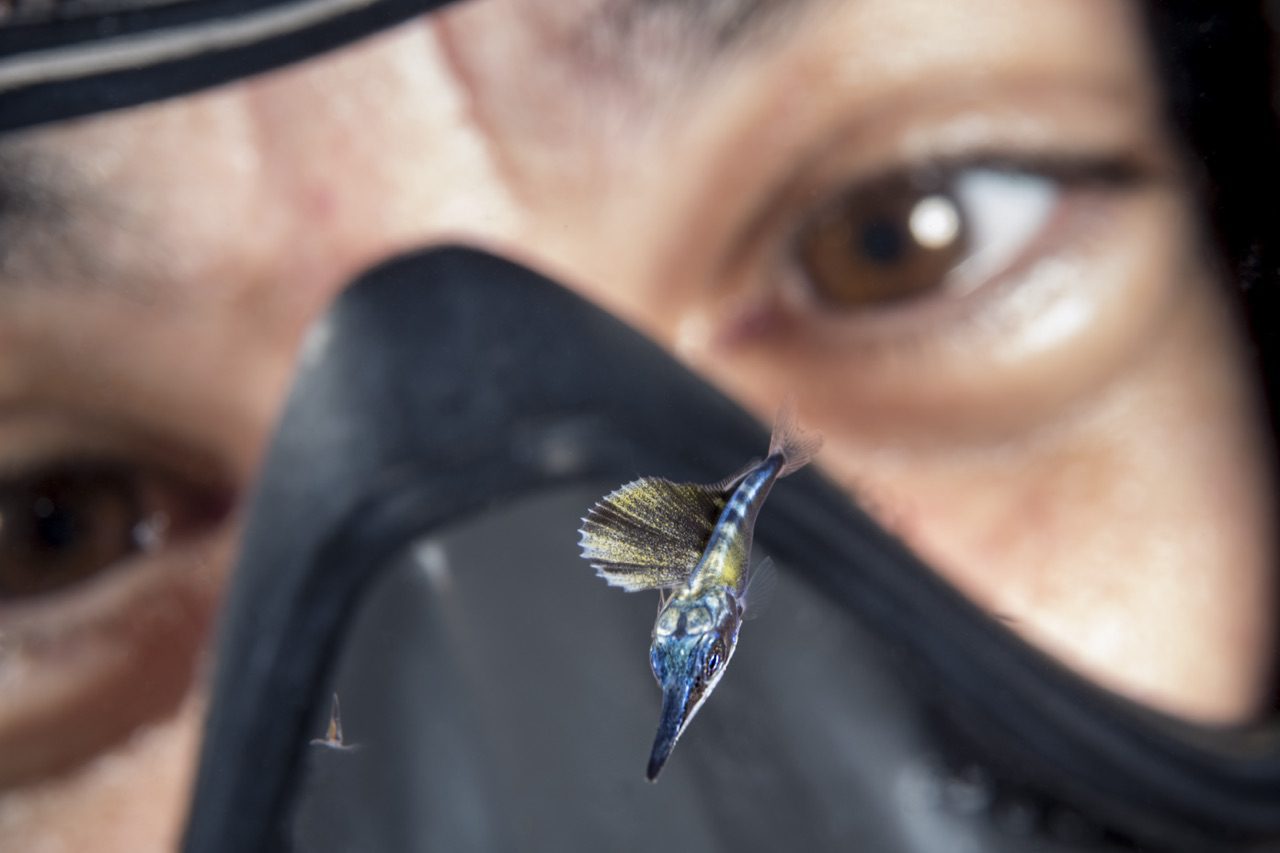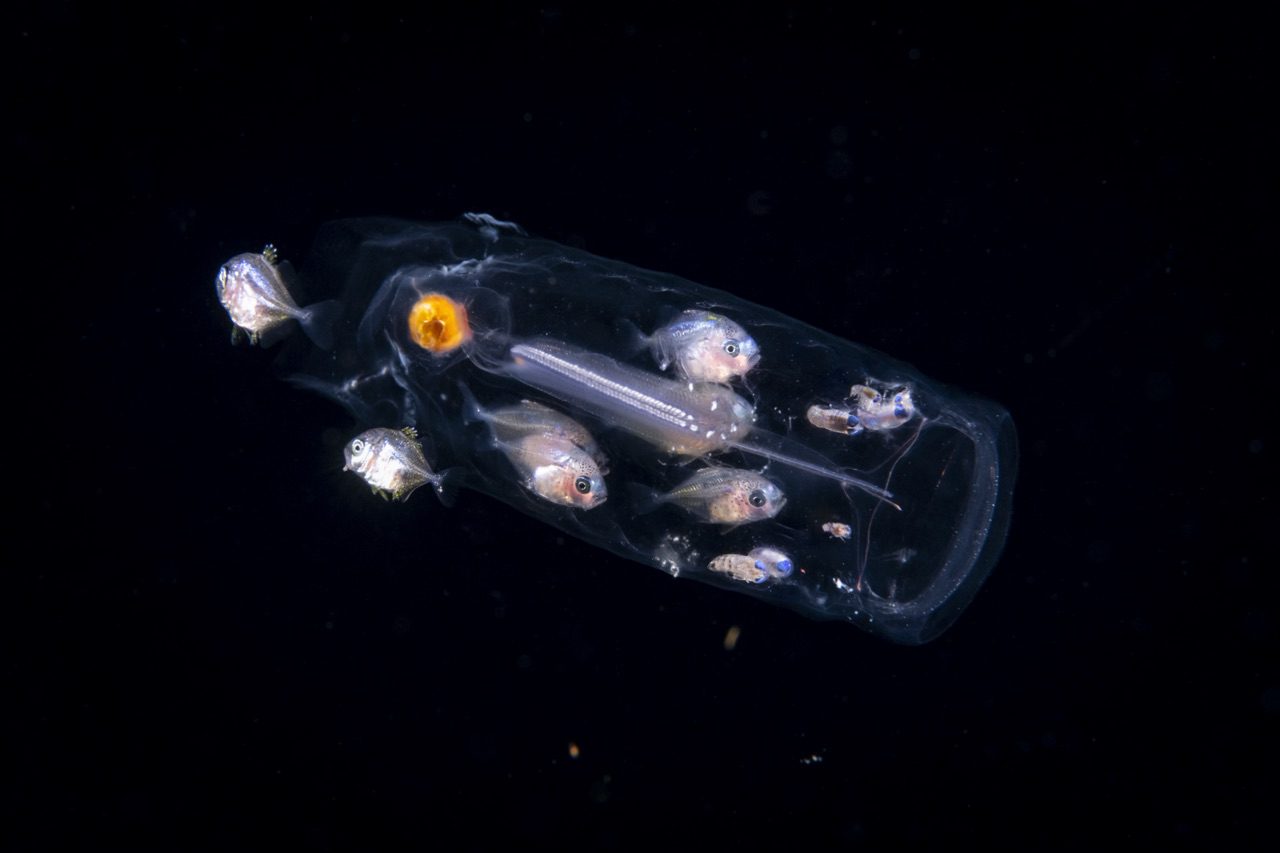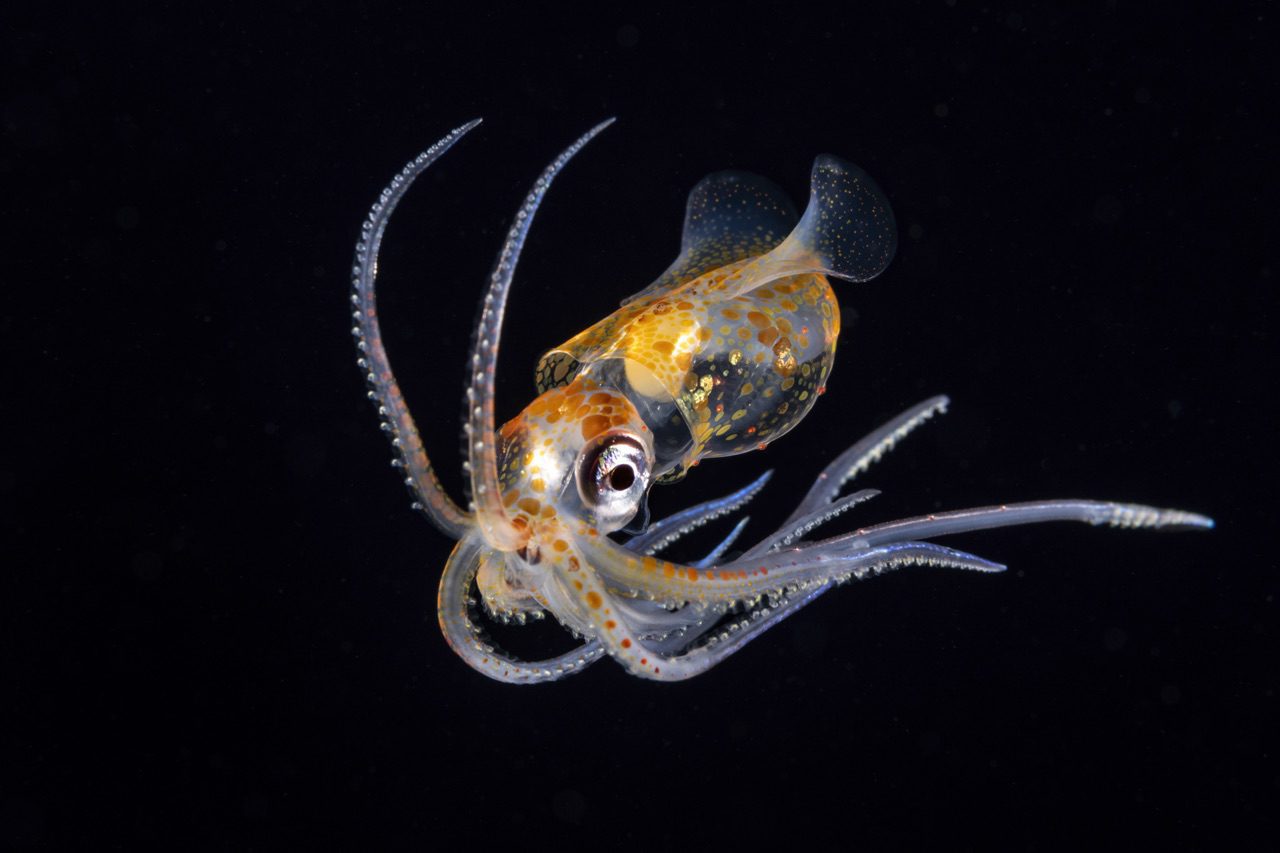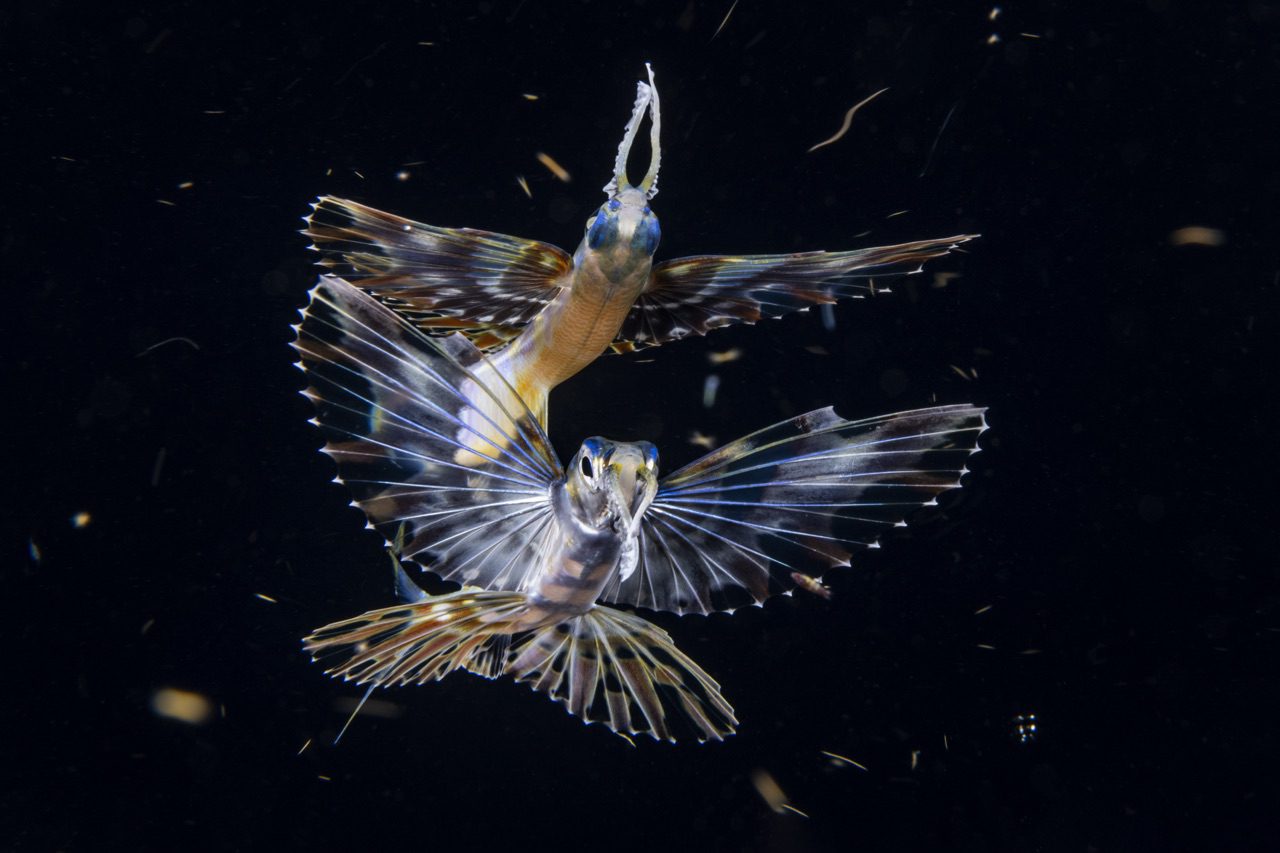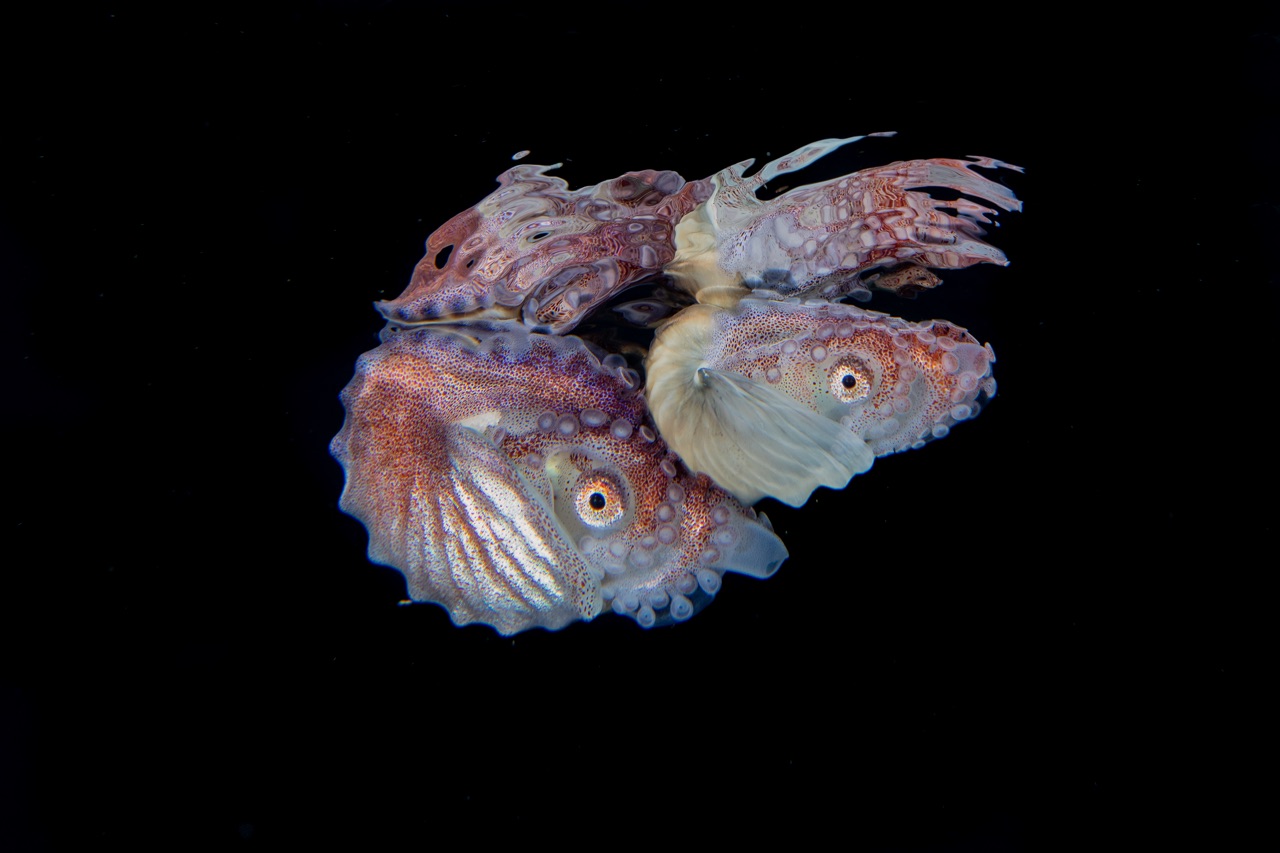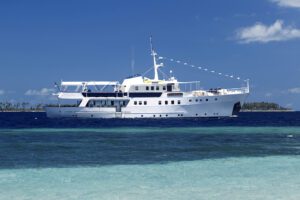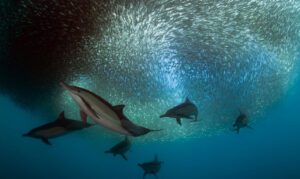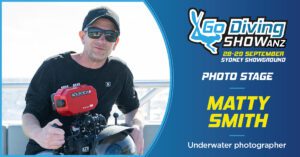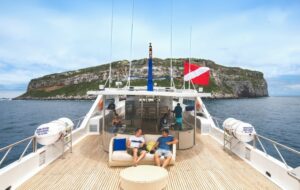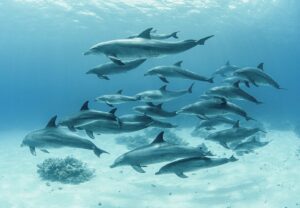Photography by Walt Stearns and Mike Bartick
Blackwater Photography
It’s well past sundown and we're several miles off the coast of Palm Beach, Florida, preparing to make a night dive. Not just any night dive, though. Tonight’s adventure will put us right in the path of the Gulf Stream, and we won’t be going to the bottom. This is blackwater diving, which is basically drift diving in open water at night, using a lighted downline for reference. And even though we might be diving over deeper water, it doesn’t mean we’ll need to go deep to see our target subjects.
In South Florida, the Gulf Stream makes a four-knot journey through the Florida Straits.
In the Palm Beach area, it swings westward to within five to seven miles of the coastline, bringing with it many of nature’s rarely seen oddities. Remarkably, the volume of the Gulf Stream here dwarfs all the rivers that empty into the Atlantic combined! Yet once you’re in the water and within the Gulf Stream’s strong yet gentle grip, there is hardly any sensation of movement.
The concept of Blackwater diving might seem a bit crazy to most people. You float weightless 50ft below the surface at night, knowing the bottom is another 550ft below, and anything could be lurking in the darkness. But this is where die-hard blackwater divers find themselves on a regular basis. One thing is for sure, all it takes is one good blackwater dive and you’ll be addicted.
The marine life we regularly see in this realm of darkness takes on an almost-unimaginable litany of shapes and forms, the majority of which are seldom larger than a fingernail. We never know what the lights will bring in, which is part of the attraction to this type of diving. There is a very real opportunity to see something that no one has ever seen before.
The most-common subjects seen on blackwater dives are small gelatinous creatures like comb jellies (Ctenophora), colonial Siphonophores and salps, sea butterflies and even tiny thimble-shaped acorn worms floating as freely as the divers in the water column. Some of the more-tantalizing prizes might include small pelagic octopuses and squid, flatfish like flounder, sole, tonguefish and tripod fish, all in their larval stages of development. Transparent and ornate, the appearance of most larval fish is far removed from what they look like as adults.
During their larval stages, deep-water denizens will often ride upwellings to a mere few feet of the surface, making it possible for recreational divers and photographers to have a chance of a lifetime experience. Subjects once only known to deep sea exploration such as the velvet whalefish, cusk-eels, deep-water anglerfish and more have been seen on blackwater dives. Many of these incredibly ornate creatures also have some of the most-colorful names in the business, like the bony-eared assfish (Acanthonus armatus) and snaggletooth stareater.
Anilao, Philippines
Halfway around the world in Anilao, Philippines, a nearly identical ritual unfolds each evening as divers take to the boats at Crystal Blue Dive Resort and head out for a late-night hunt. As in Palm Beach, Florida, the dives in Anilao take place in open ocean over deep water, employing a similar downline system, which allows the divers to free-drift in the night's current.
The downline system is now the preferred and nearly universal method for blackwater dives. This system consists of a length of rope, a buoy and strong video lights strategically positioned along the downline. The lights serve as both a reference beacon for divers and an attractant to create a plankton cloud. Crystal Blue uses a bright orange buoy that also has a light inside of it which enables the buoy to glow bright orange, aptly named ‘The Pumpkin’. This reference marker enables the surface support team to safely track the divers at all times, putting safety first!
The subjects targeted by blackwater divers in Anilao are similar to those found anywhere in the world at similar depths. However, each location also takes on its own host of creatures depending on what is endemic to, or near the area. In general, it’s a mixed bag of creatures, but curiously Anilao follows a similar seasonal pattern as South Florida.
Diel vertical migration of planktons is a well-documented occurrence worldwide. The underlying stimulus to this global event is in response to changes in light intensity throughout a 24-hour period. As late afternoon progresses to night, organisms dwelling beneath the photic zone during the day will embark on a remarkable long-distance journey to the ocean surface. In addition, horizontal migration is also a method described by science that planktons use for disbursement. It also plays heavily into the cast of characters seen on blackwater dives.
Among the many spectacular finds Anilao is known for are reliable sightings of paper nautilus (Argonauta hians), and blanket octopus, along with a number of deep-sea squid species. Other oddities include larval oar fish species and one genuine head scratcher referred to as a jellynose, which strongly resembles a caricature of Puff the Magic Dragon – except as a fish.
Gaining experience
Like anything else, becoming a proficient blackwater diver requires experience. The proficiencies needed for successful blackwater diving include dive, hunting and photo skills. Excellent buoyancy skills are a must for blackwater dives, and it is also suggested to have a computer that is constantly backlit and on for easy viewing and reference. Divers should enter the water next to the buoy and begin a slow descent in order to orient to the dark 360º environment. With limited visual references to help maintain position in the water column, paying attention to your ears can also be a good first alert to ascending or descending.
A good strategy for finding subjects is to hunt along the outside edge of the glow cast by the lights on the downline. This is particularly important for light-sensitive subjects. Using a strong handheld torch with a tight beam is one favorite method for hunting, and some divers will attach similar lights to their cameras. Be patient and allow the water and the downline lights to work for you. In the beginning fin slowly and orbit the line, using your lights to search the water ahead of you. Look small and you will find big, as many of the most beautiful creatures are tiny.
Blackwater photo-tips
Just so that you are forewarned – the learning curve for blackwater photography is as harsh as it is humbling. I often think of blackwater photography more along the lines of blackwater-photo-masochism. Even the most-experienced underwater photographer often comes away from their first blackwater endeavors with their tails tucked between their legs feeling photo-frustrated. One of the best ways to prevent this humbling experience is to pre-think and pre-set your camera with some basic jump-settings.
Jump settings:
- ISO range 320-400
- Aperture – ƒ,14
- Shutter speed – 1/200
- Strobe power-75%
Using a faster ISO increases light sensitivity, which allows for a slightly lower strobe power and faster recycle times. ƒ-14 is a natural aperture that allows for both depth of field and light. A shutter speed of 1/200 will stop the movement and help to create sharp detail of your prized finds. There’s nothing worse than returning to your computer to find your images are soft around the eyes of your subject.
In addition to the itty-bitty size of the subjects, there is also the issue of body composition and coloration. Some might have highly reflective surfaces, others may be partially opaque to completely transparent, making them not only difficult to see, but a challenge to light.
There is also a matter of framing while dealing with the ways these creatures tend to move. Unlike sedentary subjects found on the substrate, blackwater subjects are often quite active. Watch your subject, anticipate their movement and by using single spot focus, concentrate on their eyes. While some subjects tend to drift and pulsate with the current, others will spin and roll, behave erratically or suddenly jet off to one side or the other and out of frame. Fellow photographer Mike Bartick describes dealing with such creatures as trying to photograph a butterfly in flight while running after it in the dark.
Your photosystem
Underwater camera systems are as varied as they are numerous. This by itself naturally generates plenty of discussions, praises and arguments as to which is better – DSLR vs mirrorless, cropped sensor vs full frame, auto focus capability, pixel resolution, etc, etc, etc. Don’t worry too much about the system that you don’t have, and instead concentrate more on what you do have. TG shooters will find themselves comfortable and capable of capturing quality images and video.
Lenses for DSLR and mirrorless
Given that the depth of field of any given macro lens can be paper-thin, they are still the preferred lens choices for blackwater shooters. After all, most blackwater subjects are very small. Most DSLR users lean towards the 60mm macro lens for several reasons.
Thy are quick to focus, have a short working distance and a slightly wider angle of view. Using a longer macro lens makes it harder to frame and track your subject through the viewfinder, and you will be shooting at a longer distance and through more water. Diopters are rarely used, and by very few with any measure of success.
While Nikon shooters can enjoy using a 60mm on a full frame or crop sensor DSLR, Canon shooters cannot, and can often find themselves in a pickle. While Canon's crop sensor cameras can take full advantage of their 60mm macro lens, the full-frame Canons cannot. Not to worry, Sigma makes a Canon EF mount 70mm f/2.8 DG Macro Art Lens that has exceptional optics and allows the Canon full-frame crowd to enjoy the same performance as Nikon shooters, with close working distance, 1:1 reproduction and excellent quality.
Strobes and lights
Just as important as finding the right camera/lens combo is making sure you have the proper lighting to capture your images. A single strobe is okay when positioned at the 12:00, but two strobes are really preferred. But more doesn’t always equal better, and I find streamlining the system is better than overloading myself.
Two kinds of lights are actually needed for blackwater dives. A torch with a tighter beam which is used for hunting and a focus light that has a softer beam cast. Light outputs of 1,200 lumens are okay, but the ideal range is 2,500 to 5,000 lumens. Managing your light power will help to manage your burn time too. For instance, most blackwater dives span 70 to 80 minutes with some allowing as long as 95 minutes. When shopping lights, be sure to check the specs for continuous burn time at full and half power. For example, my two Kraken Sport Hydra 5000s have a burn time of 65 minutes at 100 percent flood mode, which can double the time provided I keep in the 50 percent range. These lights can be used for either focus or for hunting and often serve a dual purpose.
Autofocus and back button focus
By separating the shutter release from the focus mechanism, back button focus will help you to quickly focus or override your camera's autofocus when needed. In our experience, we have found back button focus to be the most effective for capturing behavior. The back button thumb paddle is easily accessed when shooting and activated with your thumb while the shutter is released with your index finger.
Most photographers also agree that single spot focus works better rather than grouped focus points. This way, dropping your focus point over the eye of the subject will ensure that you are focused on the correct point.
Strobe placement
One of the most common questions for any kind of underwater photography is strobe placement. Unlike shooting on the sand, where we would want the shadows to cast below or behind, shooting in a 360º environment is a little different. While some concerns such as backscatter still remain critical, shooting creatures with translucent to lightly opaque bodies can be a tough case. The only thing that I think we would all agree on is using diffusers. Diffusers help with harsh contrast and reduce the high points slightly while spreading the degree of coverage more evenly. Reading the water for particulate and test shooting from arm’s length on the downline is a great way to get a feel for proper angle and clarity.
Blackwater photographers can achieve consistent results by following the exposure triangle rule. With this configuration, the distance from the subject is equal to the distance between your strobes, with the strobe heads positioned at the 9:00 and 3:00 and pointed straight forward. This is really good for subjects such as squid, octopus or even subjects at the surface for trying to achieve reflections.
Extreme angles such as having the strobes pointed slightly in and positioned next to the lens port work well for subjects that are very close to the lens. Other methods might include top lighting with one strobe at the 12:00 and one at the 9:00. Keep in mind that these positions can also be a recipe for disaster if you are not close enough to your subject.
Conclusion
At the risk of overstating the obvious, blackwater diving is not your run of the mill night dive. Shooting small things in open water in the dark presents a whole new host of challenges that will be conquered through repeated practice. Allow yourself at least four dives to become accustomed to the experience of blackwater diving. The payoff is well worth the effort.
For more information on the Blackwater photo community, visit the ‘Blackwater Photogroup’ found on Facebook, which is now 10k members strong.
